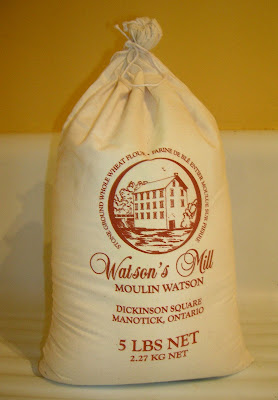 I admit that I cheat every now and then. Oh, not romantically or on tests or taxes but in the kitchen. Most people who know me think I make everything from scratch, especially considering how enthusiastically I can criticize processed foods. But those who know me really well know I sometimes take shortcuts.
I admit that I cheat every now and then. Oh, not romantically or on tests or taxes but in the kitchen. Most people who know me think I make everything from scratch, especially considering how enthusiastically I can criticize processed foods. But those who know me really well know I sometimes take shortcuts.Apparently I’m in good company. The oh-so-proper British cook Delia Smith has just released a book offering product-by-product recipes and tips on how to cheat in the kitchen. But good luck finding some of the brands she uses if you don’t live in England. When I cheat, I usually do it with a good old American classic, Campbell’s soup.
Despite all the hand-wringing in the press these days over processed foods and their effect on our health, I’ve had a long relationship with the red and white can that trumps nutritional facts. Like any illicit affair, I know it's bad for me, but I just can’t break it off.
It’s all my grandmother’s fault. Campbell’s soup figures prominently in her culinary repertoire and I can’t blame her. She was a young woman raising a family at the dawn of the processed food era when canned goods and their ilk heralded the liberation of women from the kitchen. My grandmother was raised on a farm and knew well the labour involved in growing, harvesting and preparing food from scratch. I’ve never asked her, but I imagine that, as a young mom filling her shopping basket with canned goods in those early days, the thought of speeding up dinner with processed food must have been as unbelievable but thrilling as the idea of man walking on the moon – which wouldn’t happen for a few years yet.
Unlike my generation of cooks, my grandma feels no shame in cracking open a can of Campbell’s. She uses it in almost all her signature recipes. Corn chowder (Cream of Corn soup), chicken stew (Cream of Mushroom soup) and her piece de resistance, creamy chicken vol-au-vents (Chicken a la King soup and a tin of Green Giant-brand sweet peas)
When I cheat, like I did this week, my Campbell’s soup of choice is invariably Tomato Rice. It reminds me of childhood Thanksgivings and the soup my mother made with leftover turkey. (Mom cheats, too!) We’d dine large on turkey-tomato-rice soup for almost a week – and never tired of it.
Some folks are probably shocked to know my secret. But I like to think it takes a strong cook to ‘fess up to taking shortcuts in the kitchen. I’ll go one step further and brag that I’ve even updated my mom’s signature cheat recipe for tomato-rice soup by using local seasonal produce to jazz it up. The result is the culinary equivalent of a quick nooner in a motel off the Interstate – or the perfect lunch for a cool late-summer day.
Cheater’s Tomato Rice Soup with Roast Chicken and Fresh Basil
 1 10-oz can Campbell’s Tomato Rice soup
1 10-oz can Campbell’s Tomato Rice soup1 cup roast chicken meat (cooked) cut into bite-sized pieces
1 medium-size tomato, diced
2 Tbsp (or to taste) fresh basil leaves, cut in a chiffonade
1 Tbsp heavy cream
In a small pot, prepare soup according to directions on the can. While soup is warming, add chicken, tomato. Heat soup to desired temperature. Remove from heat. Add in basil and cream and serve with a crusty bun or crackers.

